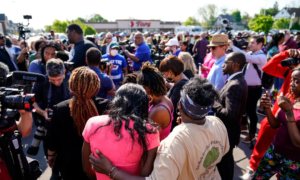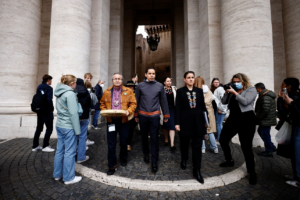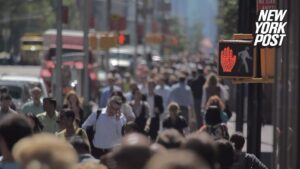By Elizabeth Turnbull
The process to redraw the lines defining Seattle’s city council districts needs more people to step forward to speak up for equity and inclusion, a group dedicated to the process said last week.
In preparation for the redistricting which will determine how the city’s seven districts will be redrawn and adjusted, community members and organizers with Redistricting Justice for Washington met last week to solidify ideas on prioritizing BIPOC voters and establishing a better shot at an equitable process.
“It’s an incredibly important period for getting that feedback in,” Joseph Shoji Lachman, policy manager at Asian Counseling and Referral Service, said at Tuesday’s meeting.
Made up of various organizations including Asian Counseling and Referral Services, Washington Community Alliance, League of Women Voters, Latino Community Fund, Tacoma Urban League and many more groups, the coalition emerged in 2020 in order to ensure BIPOC representation in the 2020 Census and is now focused on ensuring the redistricting process is also equitable.
Organizers with the coalition are working to meet an October deadline to solidify their comments before the final Seattle map is approved by the city’s redistricting commission in November of this year.
The Seattle Redistricting Commission includes five appointees “responsible for redrawing the new Council District boundaries to reflect the city’s population growth.” Two members were appointed by the City Council, EJ Juarez and Rory O’Sullivan. Two more members were appointed by then-Mayor Jenny Durkan — Neelima Shah and former Mayor Greg Nickles. Those four chose a fifth member, Patience Malaba.
CHS reported earlier on the options under consideration and the possible changes for D3. When initially adopted, each district was drawn to include roughly 88,000 people. Capitol Hill was placed in the 3rd district, which stretches from the Montlake Cut south to I-90, and then a bit further south to include a piece of Mount Baker, and from Lake Washington to roughly I-5, though it extends over to include the northern part of the Denny Triangle. Seattle has grown quite a bit over the last few years, and that growth has not been distributed proportionately, each district this time around is likely to end up with a bit more than 100,000 people. District 3, including Capitol Hill, the Central District, and First Hill, has gotten proportionately larger than that and will need its borders to shrink.
You can view and read more about the three draft options here.
Seattle City Council district remapping process continues — District 3 community forum set for June
At Tuesday’s meeting, members of the coalition presented various maps and suggestions for a redistricting process that would ensure representation of the residents that live inside each district. Organizers presented three map proposals for redistricting District 1, 2 and 3 simultåneously. Capitol Hill currently lies in District 3 and is represented by Councilmember Kshama Sawant.
The coalition’s priority for these three districts would try to maintain the substantial BIPOC presence in District 2—which contains much of Southeast Seattle– while moving key Central District landmarks to District 3. It would move Yesler Terrace, a largely BIPOC neighborhood, into District 2, in order to solidify a majority BIPOC district in the city.
Second, the coalition posited moving Georgetown and South Park, which have a strong Latino community but rests in a largely white district, to District 2 to increase BIPOC voting power. Overall, the coalition is leaning against this option as they believe the move might conflict with city charter rules in regards to water way crossings.
Third, option D in the presentation, would maximize the BIPOC voting power in District 2 by a 1.5% increase, according to the Coalition, by putting Mount Baker fully in District 3 and Langston Hughes in District 2.

Members of the coalition presented various suggestions for all seven districts as well as suggestions that encompassed all of the seven districts simultaneously—most substantially adjusting the size of districts in North Seattle.

As part of their efforts, the coalition has created a survey that residents can use to vote on their preferred maps for the district proposals across the city and express any concerns and offer input into the process.
Ultimately, the redistricting process will be guided by the Seattle Redistricting Commission.
Overall, organizers at Tuesday’s meeting including Katie Stultz, senior political manager at Win Win Network, urged residents to consider the implications of the redistricting and how they can impact the process.
“Who is elected and who our representatives are really make decisions for the number of resources and political power that communities can receive,” Stultz said. “Redistricting is one piece of that larger puzzle.”
CHS SUMMER VACATION
CHS is taking a break from daily news through August 6th but we’ll still be on hand to run the CHS Facebook Group and post special CHS photo posts with scenes from around the neighborhood. New events will be posted to the CHS Calendar. @jseattleon Twitter will probably have a few things to say here and there. Plus, CHS Community Posts will still be published. You can also help us out: See something others should know about? Email CHS or call/txt/Signal (206) 399-5959. We love providing community news on CHS free for thousands of readers. SUBSCRIBE HERE and help keep CHS available to all. Become a subscriber at $1/$5/$10 a month to help CHS provide community news with no paywall. You can also sign up for a one-time annual payment.




